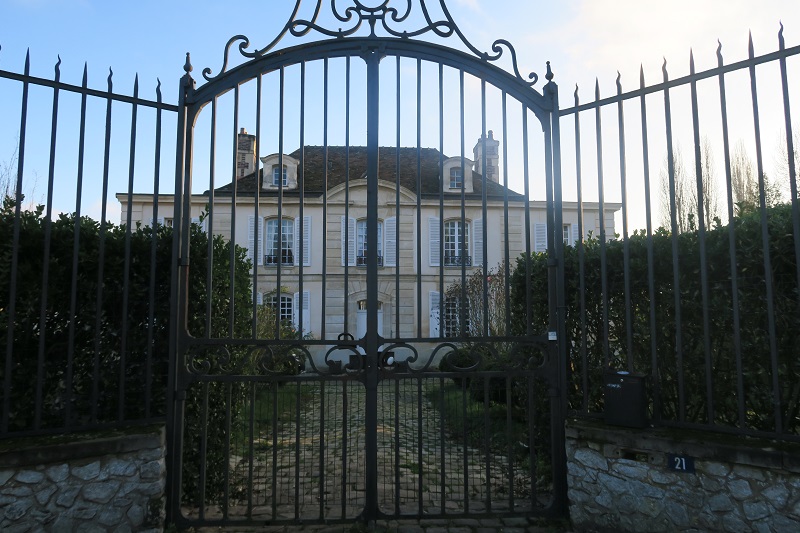Informations directionnelles
Laisser le manoir sur la gauche et continuer tout droit. Laisser sur la droite la rue de Beauregard. 50 mètres plus loin, emprunter le chemin à gauche. A la fourche, prendre à droite. Continuer tout droit jusqu’à la rue. A l’intersection, prendre à gauche. Ensuite, aller à gauche chemin des roches. Continuer tout droit dans le rue de Pontoise et encore tout droit rue de l’Aire jusqu’à la maison où naquit Claude Viseux.
Prochain point : lat="49.13326" lon="2.22756"
Vaux Manor
A gem of classical architecture
Dating from the 18th century …
Built in the classic aristocratic architectural style, the central core of the manor dates from the mid-18th century, as shown by the date 1754 on one of the chimney stacks. Built from plastered quarry stone with decorated cut stone, it is on two storeys flanked by two wings. The placing of doors and windows is regular and symmetrical, with an arched door and five arched windows on the main building, four rectangular windows on the wings and two arched dormer-style windows. The hip roof is topped with flat tiles and the side wings have a flat roof.
The property belonged to the de Perthuis family, lords of Champagne from the 15th century until the French Revolution. Baron Léon Amable de Perthuis was also Mayor of Champagne from 1817 to 1826. The house was in the de Perthuis family until 25 August 1815, when Baron Léon de Perthuis de Laillevault sold it to Mr Rouiller, a local farmer.
…with a far older element
The magnificent entrance gate is from the 13th century and comes from the “Hôtel de Valentinois”, the Count of Choiseul’s former residence. It once graced Rue de l’Annonciation in Paris and was destroyed in 1914. The gateway found its way to Vaux Manor in 1950, brought there by decorator Léon Lepeltier, who purchased the property in 1929.
Facing the street, the service quarters were built between 1849 and 1864. Once a stable and laundry, they were later turned into artist studios.




